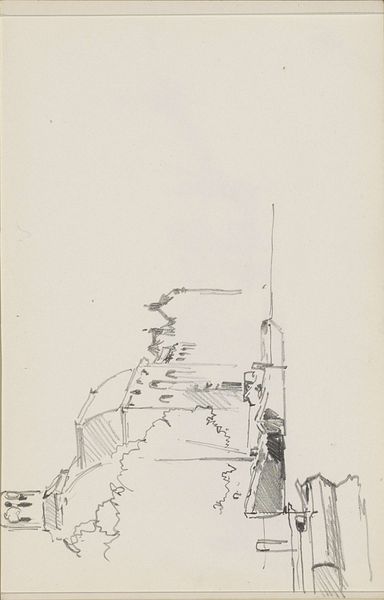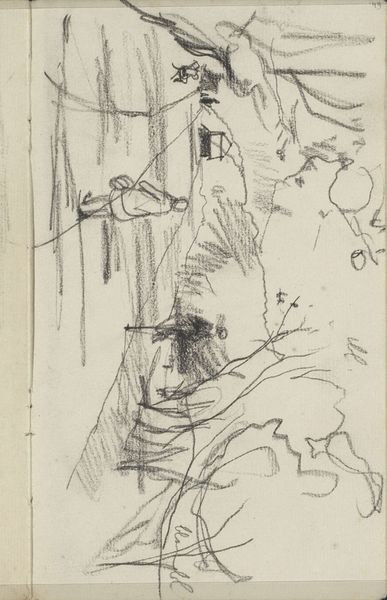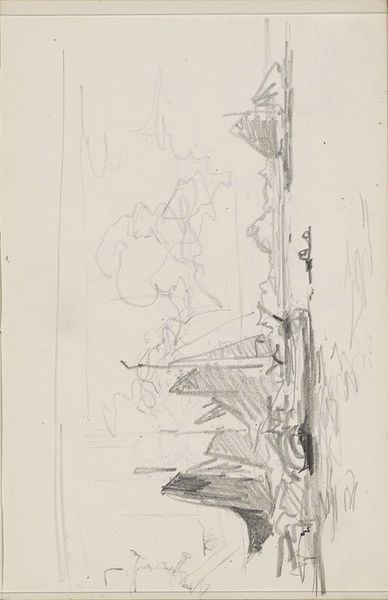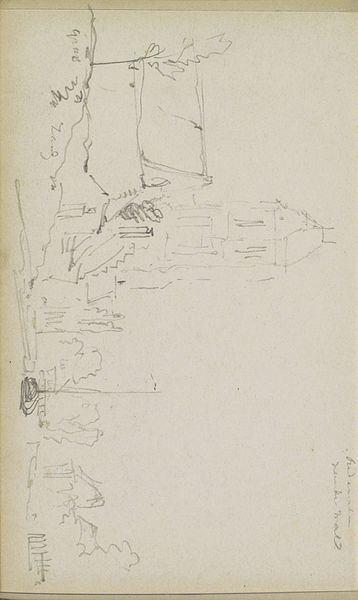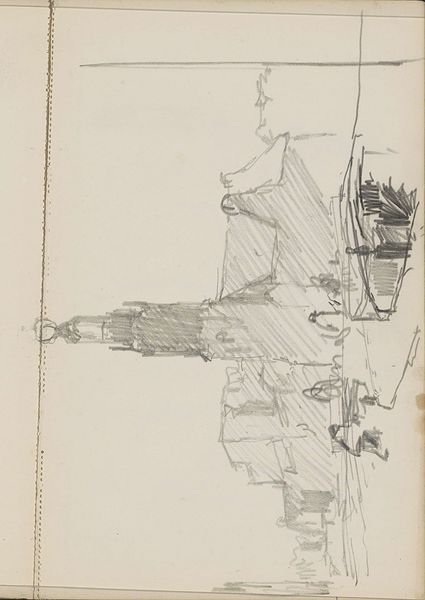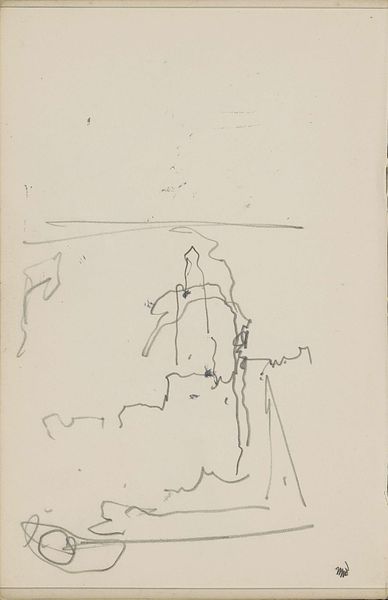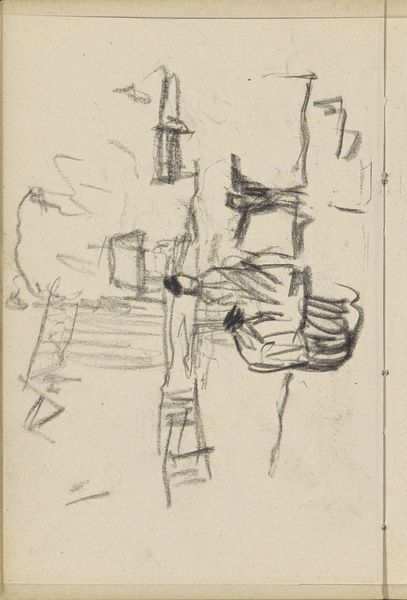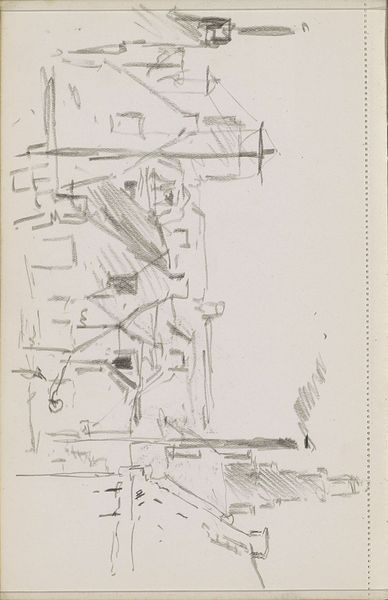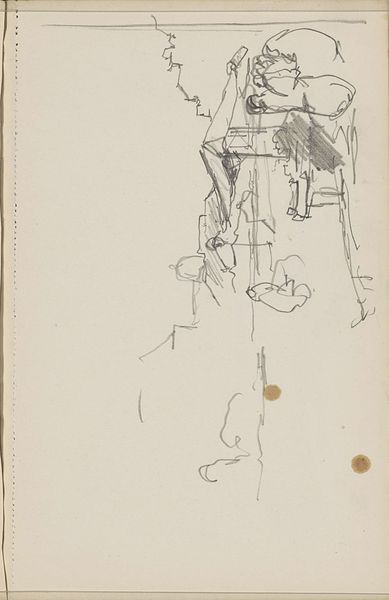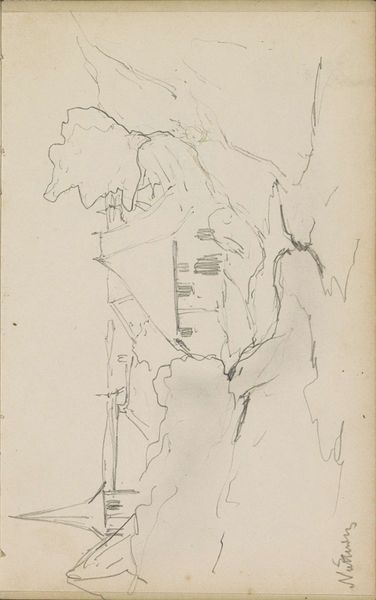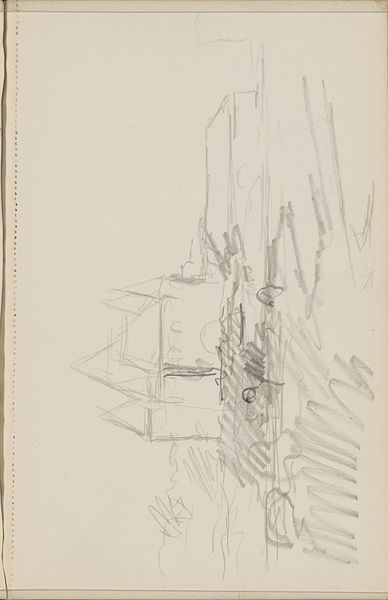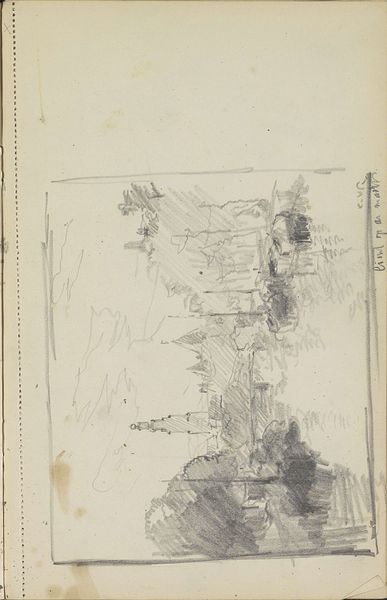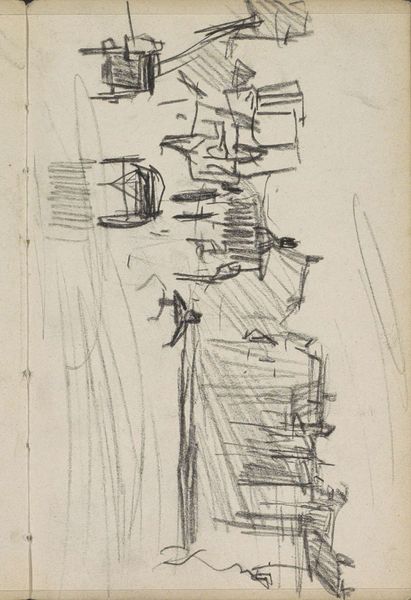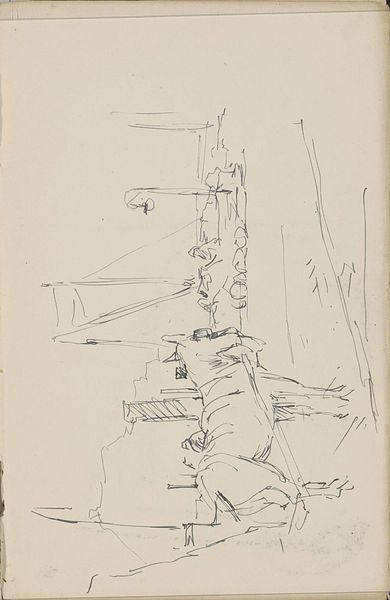
Copyright: Rijks Museum: Open Domain
Editor: Here we have Cornelis Vreedenburgh's "Huizen aan het water," dating sometime between 1890 and 1946. It's a pencil drawing at the Rijksmuseum, a rather fleeting landscape. It feels so sparse and almost… tentative. What do you see in this piece? Curator: I see the bones of a place, a memory sketched. Vreedenburgh captures not just the houses but also the *feeling* of being near the water. Consider the verticality – the lines almost drip downwards. This isn’t simply about representation; it’s about conveying the psychological weight of place. Notice how some lines are firm, definitive – the architecture. And then other lines become frantic, scribbled – what does that visual contrast tell us about what is most important? Editor: That contrast is interesting! It’s like the architecture is solid and enduring, but the nature around it is… ephemeral? Curator: Precisely. The solid geometry suggests permanence, the familiar. Water and foliage are organic, alive. Vreedenburgh invites us to consider: what aspects of our surroundings truly remain with us? What fleeting impressions fade? Editor: So it’s not just a landscape; it’s a study of memory and emotion tied to a place? Curator: Exactly! It's an invitation to consider our own internal landscapes. What symbols do *we* carry with us, linking place, time, and emotion? Does this connect with you personally? Editor: I think it does. It's a reminder that our experience of a place is shaped by more than just what we see, but how we *feel* about it, what it means to us. Curator: Indeed. And the symbols he chose continue to resonate today, showing us a little about who we are. Editor: I never would have thought to look at a simple sketch in such a way!
Comments
No comments
Be the first to comment and join the conversation on the ultimate creative platform.
